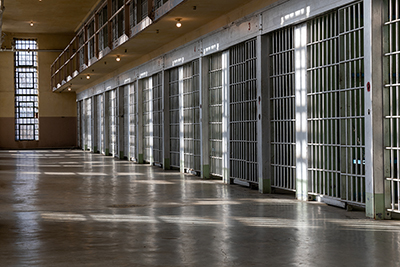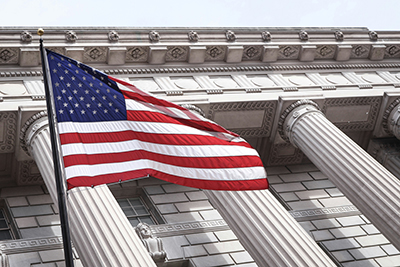Policy and Legal Issues
Do Enrollment Brokers Increase Medicaid Enrollment?
In 2018, only 79% of the 86 million Americans eligible for Medicaid had enrolled in it. To increase participation, some state Medicaid agencies contracted with independent brokers to reach out, assist, and enroll those who qualify. In Health Affairs, IPR economist Molly Schnell and her colleagues analyze the effects of enrollment brokers on Medicaid enrollment and other outcomes, such as application processing, for 2008–2018. During those years, six states and Washington, D.C., began contracting with brokers, joining 18 states that already had contracts as of 2008. The researchers compared changes in Medicaid participation following the initiation of a contract with an enrollment broker with contemporaneous changes in Medicaid participation in the 26 states that never used brokers. The results demonstrate that state contracts with enrollment brokers had no significant effects on Medicaid participation. Plus, the researchers did not find any other advantages stemming from broker contracts, including improved processing times, better plan choices, or reduced administrative costs per eligible person. States aiming to expand Medicaid enrollment must consider whether contracting with independent brokers is the best use of limited funds.
Incarceration Rates of Immigrants and U.S. Men, 1870–2020
 Anti-immigrant sentiment in the U.S. has long associated immigrants with criminality. In a recent working paper, IPR economist Elisa Jácome and her colleagues delve into 150 years of records to see what the data say: Were immigrants ever more likely to commit crimes than those born in the U.S.? Are today’s immigrants more likely to be criminals than earlier ones? To investigate, the researchers used Census data from 1870–1940, as well as nationally representative samples from 1950–2020. To measure criminality, the authors identify men in prison in these data. Their data show that for the last 150 years, incarceration rates for immigrants were lower than U.S.-born men. Since 1960, the gap between the two groups has widened. Today, immigrants are 60% less likely to be incarcerated than all U.S.-born men and 30% less likely to be incarcerated than White U.S.-born men. The decline in the rate of immigrants going to prison, compared to the U.S. born, holds for immigrants from all regions. The researchers argue that changes in criminal justice and immigration policies cannot explain today’s larger incarceration gap. They suggest, rather, that it results from structural economic forces disproportionately affecting low-educated U.S.-born men over the last five decades.
Anti-immigrant sentiment in the U.S. has long associated immigrants with criminality. In a recent working paper, IPR economist Elisa Jácome and her colleagues delve into 150 years of records to see what the data say: Were immigrants ever more likely to commit crimes than those born in the U.S.? Are today’s immigrants more likely to be criminals than earlier ones? To investigate, the researchers used Census data from 1870–1940, as well as nationally representative samples from 1950–2020. To measure criminality, the authors identify men in prison in these data. Their data show that for the last 150 years, incarceration rates for immigrants were lower than U.S.-born men. Since 1960, the gap between the two groups has widened. Today, immigrants are 60% less likely to be incarcerated than all U.S.-born men and 30% less likely to be incarcerated than White U.S.-born men. The decline in the rate of immigrants going to prison, compared to the U.S. born, holds for immigrants from all regions. The researchers argue that changes in criminal justice and immigration policies cannot explain today’s larger incarceration gap. They suggest, rather, that it results from structural economic forces disproportionately affecting low-educated U.S.-born men over the last five decades.
English-Language Attainment of Refugees in the 20th Century
The United States has admitted more than three million refugees since 1980 through official refugee resettlement programs, but before 1948, refugees arrived without formal selection processes or federal support. In Sociological Science, computational linguist and IPR associate Rob Voigt and his colleagues study the integration of refugees to the U.S. in the early 20th century by examining their level of English attainment. They classify immigrants as refugees if they left their home country because of war, violence, or persecution. The researchers examine an archive of 1,190 oral history transcripts and audio interviews of immigrants who arrived at Ellis Island between 1893 and 1957. Using computational methods, they compare English proficiency refugees learned to the English skills of other immigrants, looking at their complexity of speech—vocabulary and sentence structure—and fluency—whether an individual had an accent and speech rate. The researchers find that those who were categorized as refugees achieved a higher level of English proficiency by the end of their lives compared to immigrants who came to join family or seek a better job. They also use data from the New Immigrant Survey to compare the English attainment of refugees in the past with refugees who received permanent residence in 2003 and find similar patterns. These findings suggest that refugees work to improve their linguistic proficiency, possibly because they have more incentive to learn English since they cannot return to their home countries.
Identifying Federal Agencies with Substantial Personnel Change in the Trump Era
 U.S. presidents and federal government agencies often have an adversarial relationship, but it’s unclear how the Trump administration, plagued by tension between President Trump and members of the civil service, impacted the federal workforce. In PLOS One, IPR political scientist Brian Libgober and Mark Richardson of Georgetown University explore the Trump administration’s approach to personnel politics Using federal employment records from the Office of Personnel Management (OPM), they examine rates of entry and exit at agencies and bureaus across the executive branch during President Trump’s term. Because some bureaus have fewer employees than others, they used a Bayesian hierarchical model, which considers differences and similarities in groups, to analyze employment changes and account for the different size of each bureau. They find that across the bureaus, employment rates by the end of the Trump administration in 2021 were not significantly different from the rates in January 2017. However, certain bureaus, such as immigration and veteran-affairs bureaus, grew substantially, while others like civil-rights focused bureaus showed signs of stress and lost employees. Compared to the first terms of President George W. Bush and President Obama, the Trump administration lost more employees across most agencies. While the media and members of Congress reported that agencies like the State Department and Environmental Protection Agency were in crisis during the Trump administration, these findings show that other bureaus also suffered a large loss of staff during President Trump’s term.
U.S. presidents and federal government agencies often have an adversarial relationship, but it’s unclear how the Trump administration, plagued by tension between President Trump and members of the civil service, impacted the federal workforce. In PLOS One, IPR political scientist Brian Libgober and Mark Richardson of Georgetown University explore the Trump administration’s approach to personnel politics Using federal employment records from the Office of Personnel Management (OPM), they examine rates of entry and exit at agencies and bureaus across the executive branch during President Trump’s term. Because some bureaus have fewer employees than others, they used a Bayesian hierarchical model, which considers differences and similarities in groups, to analyze employment changes and account for the different size of each bureau. They find that across the bureaus, employment rates by the end of the Trump administration in 2021 were not significantly different from the rates in January 2017. However, certain bureaus, such as immigration and veteran-affairs bureaus, grew substantially, while others like civil-rights focused bureaus showed signs of stress and lost employees. Compared to the first terms of President George W. Bush and President Obama, the Trump administration lost more employees across most agencies. While the media and members of Congress reported that agencies like the State Department and Environmental Protection Agency were in crisis during the Trump administration, these findings show that other bureaus also suffered a large loss of staff during President Trump’s term.
Rebel Rule and Economic Outcomes in Colombia
Rebel-armed groups rule over millions in areas of civil war, but little is known about the economic effects of such rule on civilians’ lives. In the Journal of Conflict Resolution, political scientist and IPR associate Ana Arjona and her colleagues examine, for the first time, the long-term consequences on household economic resilience in a post-war period of rebel rule. They used a longitudinal household survey in four conflict areas in Colombia in 2010, 2013, and 2016 to over 4,500 rural households. They then combined the findings with original data on whether, and how, armed actors ruled each community during different stages of the civil war. Over the course of the study, two periods of damaging weather—extreme rainfall and droughts—provided tests of rural household resilience to economic hardship. The results reveal that the households exposed to the weather extremes lost crops and had less food to eat, forcing some to migrate. But households in communities where armed groups’ rule was stronger were not as affected by the bad weather, likely due to the rebels’ fostering improved infrastructure, closer interaction with civilians, and involvement in dispute resolution. Those who lived in places with stronger rebel rule experienced better economic outcomes than those who did not. The researchers note that civil war may lead to institution building that affects economic conditions after a conflict ends.
Factors That Encourage Syrian Refugees to Return Home Voluntarily
Nearly 5.6 million Syrians have been refugees since 2011, but only 1.8 percent returned to Syria voluntarily by 2018. With few refugees returning home, understanding return behavior can help policymakers understand what encourages an early, voluntary return to the refugees’ home country. In the Journal of Development Economics, IPR economist Lori Beaman and her colleagues analyze the refugees’ characteristics, living conditions in the host country, and conditions in Syria to parse out which factors may encourage refugees to return home. All the refugees in the sample left Syria between January 2011 and March 2018 and went to Lebanon, Jordan, or Iraq. The researchers used the Profile Global Registration System (ProGres) database of the United Nations High Commissioner for Refugees (UNHCR) to collect data on 2.16 million refugees. To determine conditions in the host country, Beaman and her co-authors used survey data from the United Nations. Then to determine conditions in Syria, the researchers collected monthly conflict activity, such as airstrikes and small fights, between January 2011 and August 2018, and nighttime light data to represent access to utilities. The researchers find refugees are more likely to return home if there is less conflict and if light conditions improve in Syria. Additionally, improved conditions in exile encourage refugees to return more than poor conditions in the host country. In fact, the researchers discover that poor conditions reduce the likelihood of return in some situations, such as food access. Understanding who stays is also important for the host country because it can help guide its economic welfare support and humanitarian interventions for refugees.